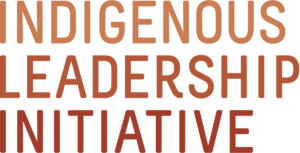Pulling Together: Indigenous Peoples Offer International Leadership in Caring for Land and Sea
Nuxalk Guardian Watchmen, British Columbia. Photo credit: ’Qátuw̓as Brown
By Frank Brown
February 22, 2023
At a recent event on Indigenous-led conservation, Hinano Murphy of the Tetiaroa Society in Tahiti showed a satellite image of the Pacific Ocean. She told the room full of Indigenous Peoples and allies from Canada, Australia, New Zealand, United States and beyond: “This water brings us together. We have to use the power of this water to heal and care and love it.”
“Hawaiians have canoes. Māori have canoes. First Nations have canoes,” she said. “We all have the value that we are one with the water, so why don’t we use our power, our voice, our chanting, our stories to paddle together.”
The call to paddle together comes at a critical time. As the planet faces intensifying climate change and biodiversity loss, Indigenous place-based peoples are stepping forward with solutions. By coming together and supporting each other, we are building momentum that will help restore lands and seas.
We saw it at COP15, the United Nations biodiversity summit in Montreal in December, where Indigenous leaders called attention to the fact that 80 per cent of the world’s remaining biodiversity is on lands cared for by Indigenous Peoples. By the end of the summit, nearly 200 countries committed to protecting 30 per cent of lands and waters by 2030 and recognizing Indigenous rights, lands, and knowledge.
And we saw it at IMPAC5 in Vancouver in February, where thousands of delegates discussed how to expand marine protected areas around the world. Once again, Indigenous leaders provided concrete examples of sustaining ocean waters and the aquatic life the feeds our communities, economies, and cultures.
The Indigenous Leadership Initiative (ILI) convened gatherings at both these global events. The ILI focuses primarily on terrestrial protections, but there is a convergence in the leadership of Indigenous place-based people on land and sea. And so, the ILI is working to share lessons learned in what is now known as Canada and plant the seeds for international collaboration.
Indigenous Peoples are safeguarding the refugia the future depends on—the places where animals and plants can thrive even in the face of climate change and biodiversity loss. Eighty per cent of the world’s remaining biodiversity is on lands cared for by Indigenous Peoples. Indigenous Nations have proposed scores of Indigenous Protected and Conserved Areas here in Canada, and Indigenous Guardians programs are a proven model of stewardship.
Yet even as the scientific data confirm the success of Indigenous-led conservation, western approaches tend to break it down into separate parts. The Indigenous perspective focuses on interconnection, reciprocity, and interdependence.
Indigenous-led conservation is about our relationship with our lands and seas.
ILI Senior Leader Bev Sellars speaks about the “Love Story” Indigenous Peoples have with their territories. Photo credit: Science World
This shined through at a recent IMPAC5 event called, Ocean Tribes Gathering, hosted by the ILI and Science World in Vancouver. Over 200 people gathered for a reception and opportunity to experience two exhibits:
Bákvḷá about the Haíɫzaqv First Nation’s sustainable herring-roe-on-kelp fishery
And Sacred Journey about the resurgence of Pacific Northwest canoe culture and the renewal of relationships with the natural world. The exhibit explores how canoes are a vessel of decolonization and relearning ancestral teachings.
The evening also included panel discussions on Indigenous-led conservation, food sovereignty, and conservation-based economies.
Historian, author, and ILI Senior Leader Bev Sellars began the conversation with a love story. “When you love someone, you do everything you can to protect them. You fight for them, you nurture them. All this, Indigenous people have felt for their territories.” And Dr. Tabitha Robin, a professor at the University of British Columbia said, “Fish tell me what I am responsible to, and I am responsible to the waters,” she said.
Everything Is Connected
Whether we were talking about the Polynesian Voyaging Society’s Moananuiakea circum-Pacific voyage or about the importance of building capacity in First Nations communities to manage conservation-based businesses, we were really expressing our interdependence with our territories.
We are in a delicate time and place in the biosphere and in human evolution. We are trying to hold on to the life-giving values that sustain us. Indigenous Peoples nurture these values within our cultures and knowledge systems. The world needs our leadership now more than ever.
Gatherings of Indigenous Peoples across oceans and borders give me hope. We come away inspired and ready to join with likeminded people to pull together in the same direction.
This is the beginning of the conversation. We will continue honouring our responsibility to the natural world by focusing on relationship and interdependence. Indigenous-led conservation is about a whole-systems approach. We don’t do this in silos.
Everything is connected. And our work must give effect to this understanding.
Hinano Murphy, Frank Murphy, and Dan Hikuroa speak about the Polynesian Voyaging Society’s Moananuiakea circum-Pacific voyage. Photo credit: Science World.




